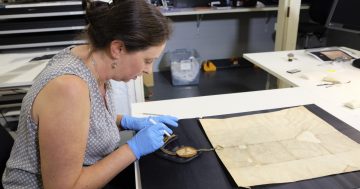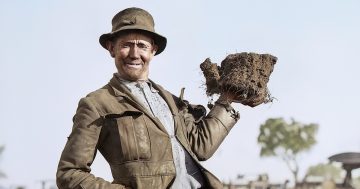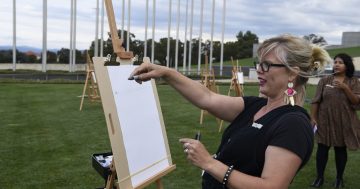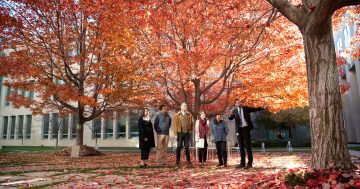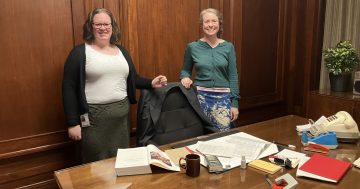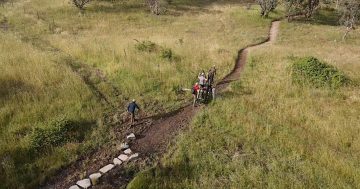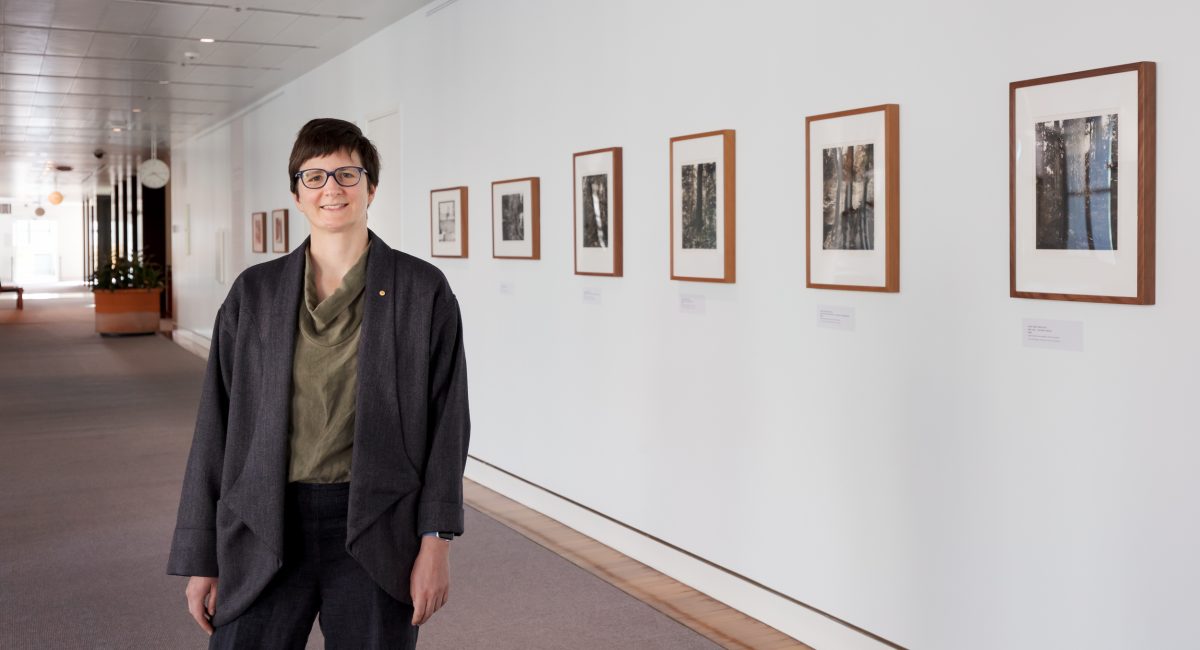
Acting director, Art Collections at Australian Parliament House, Penelope Grist OAM, in front of images from the Home Grown display now on. Photo: David Hempenstall, Parliament House.
Architect Romaldo Giurgola had a clear vision when it came to the creation of Australia’s Parliament House: foremost, it had to connect to the land on which it was to sit.
To achieve such excellence, he said at the time, it “would rest on the love and proximity to the natural materials of the land”.
Today, few other buildings in Australia have such a spiritual connection to their land – a connection that stands as firmly today as it did in 1988 when the late Queen officially opened Australia’s Parliament House in Canberra.
To mark Parliament House’s 35th year, and its Open Day this Sunday, 8 October, acting director, Parliament House Art Collection, Penelope Grist OAM, has curated the Home Grown exhibition designed to tell that story visually.
She has sifted through the 500 photographs, commissioned in 1983 by the then Parliament House Construction Authority for 24 artists to produce a photographic record of the construction between 1984 and 1986.
The work of photographers Jillian Gibb and Anthony Green, showcased in the exhibition, represents the natural form of the land, hills and forests from which the timber and stone for Parliament House was sourced.
Ms Grist said it was hard to cull the collection’s images for the display. “It always is,” she said. “You always want to include 50 but in the end it’s nice to give each one the space it deserves.”
She said the images from the Construction of Parliament House collection didn’t come out on show often and was delighted Open Day visitors would be able to see them.
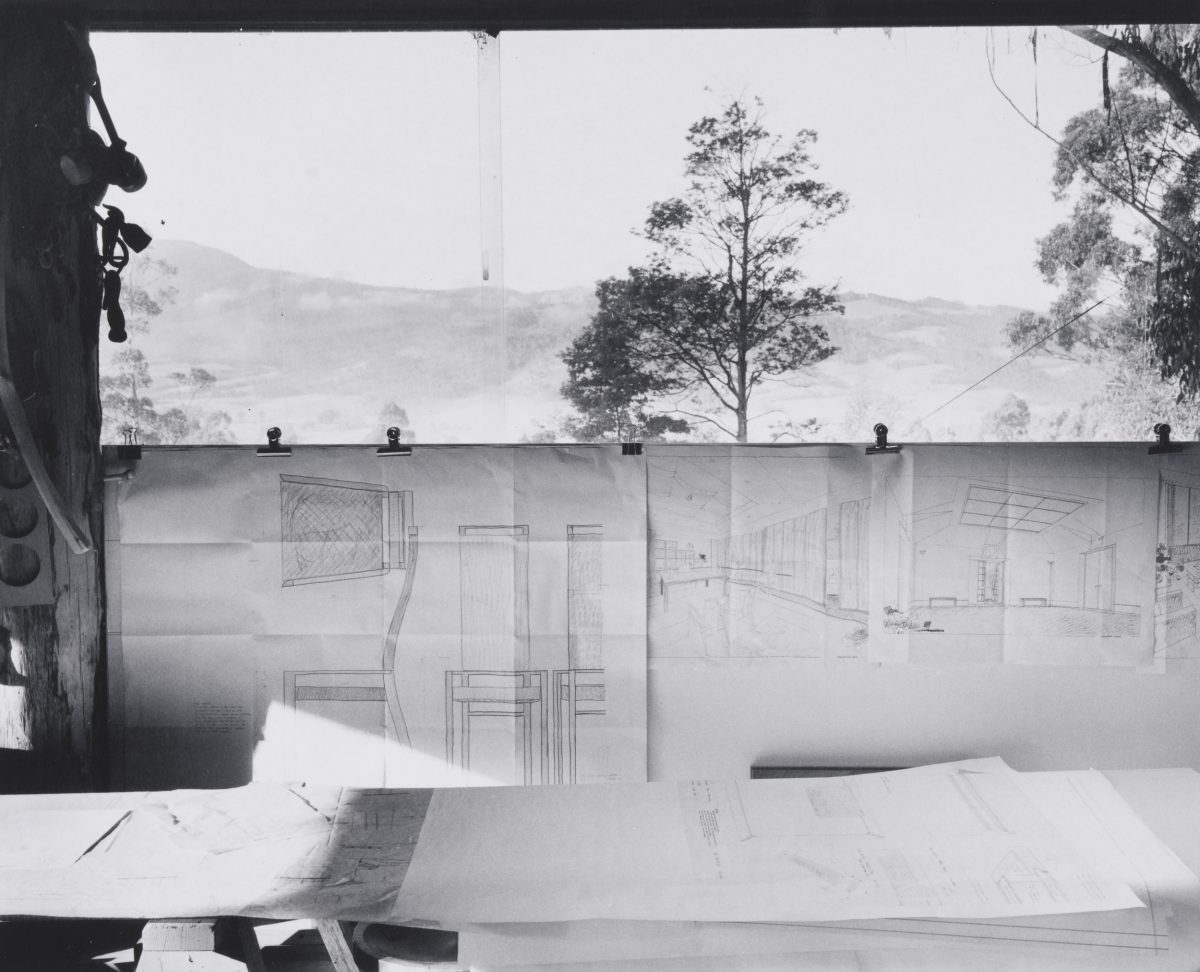
In 1985, craftsman Kevin Perkins pinned drawings of his vision for Huon pine features in the new Parliament House with the view of pines from his Tasmanian studio window. Photo: Anthony Green, Parliament House Art Collection.
“I love the connection between the craftsmanship going back to the raw materials that created it. Apart from anything, it shows you how many skilled craftspeople worked on this building,” Ms Grist said.
“That’s one of the reasons we find Open Day so exciting. As people who work here, we are lucky enough to experience the beauty of this building every day, so it is special for us to share it with the public – share a world they wouldn’t normally see.
“The public areas of the building are great, but it is also good to show people behind the scenes.”
Ms Grist said she selected images by Green and Gibb because they caught the architect’s vision of what an Australian Parliament House should be.
“The images also show the unbelievable skill it takes to turn wild things into the beautiful environment in which we work in this building.”
They include Green’s images of Eugowra, in central NSW, where the granite was found to form the central interior of the building, courtyards and benches at the House as well as the Huon pine grown in Tasmania used by craftsman Kevin Perkins to make doors and furniture in the Prime Minister’s suite.
Gibb’s images from her travels through the forests of the country’s east coast, document the white cedar used in the furniture in the Speaker’s suite along with the silky oak and cudgerie in the marble foyer marquetry and Cabinet suite.
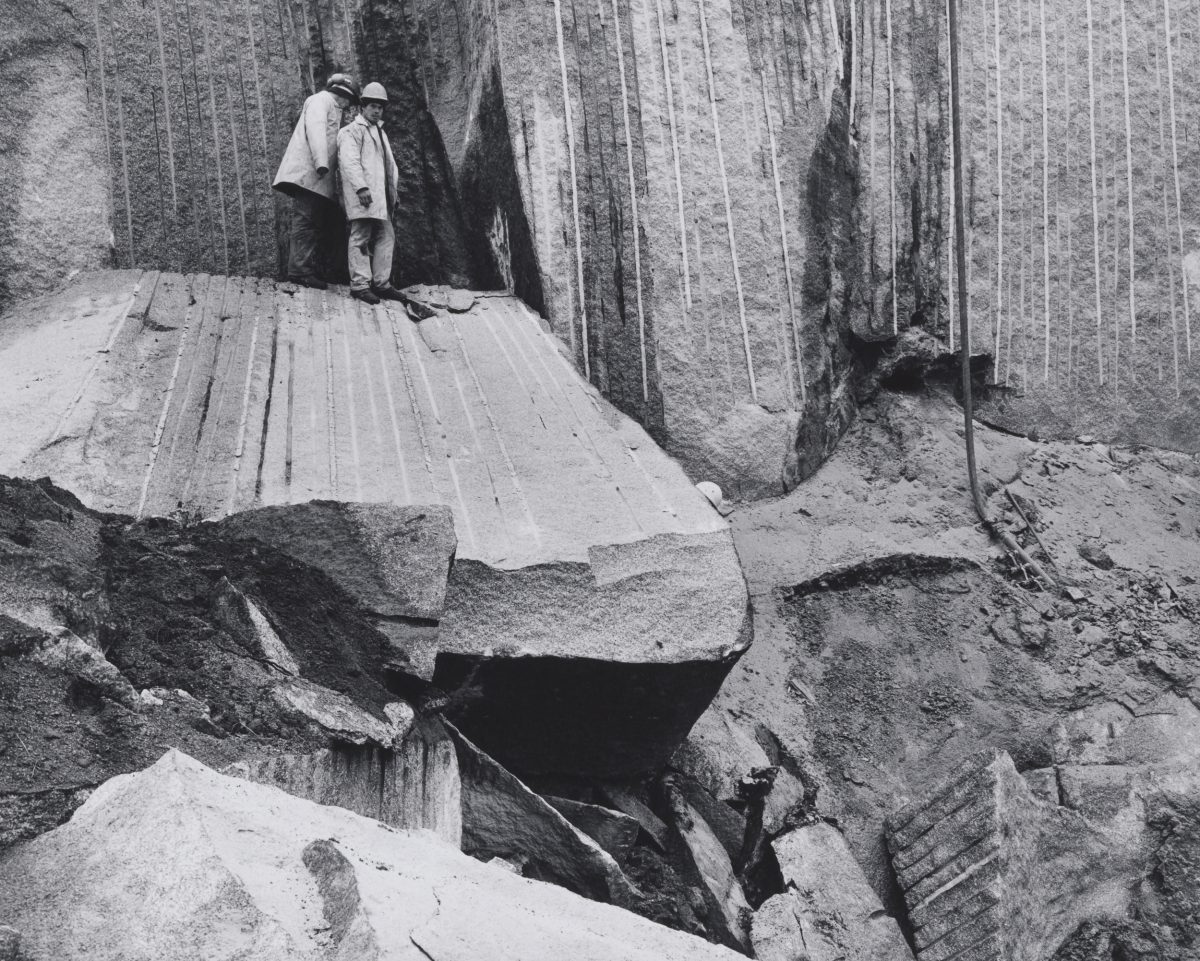
Officials inspect the quality of the granite in Eugowra, NSW, in 1984 for its suitability in the new Parliament House. Photo: Anthony Green, Parliament House Art Collection.
“Her images of the forests show a sense of wilderness of the rawness of the landscape,” Ms Grist said. “In some of them, it looks like the trees themselves have personalities, like they’re a portrait of trees.
“Through her work, you can even get a sense of what these trees will eventually become.”
Complementing Home Grown is Turning the Key which celebrates the House’s 35th year complete with an audio-visual recording of the late Queen performing the opening honours on 9 May, 1988 – and the gold-plated brass and sterling silver key she used to open the door. It also includes signatures in the official visitors’ book three years earlier, from the man who would become King, Charles and his then wife, Diana. The spade used by then Prime Minister Malcolm Fraser to turn the House’s first sod along with a page of mosaic samples – when the covering for the forecourt was still under debate – are also featured.
Home Grown, a free exhibition, is open daily on Level 1 until 27 October.
Turning the Key, a free exhibition, is open daily on Level 1 until 19 November.
Parliament House Open Day is on Sunday, 8 October, from 10am.












